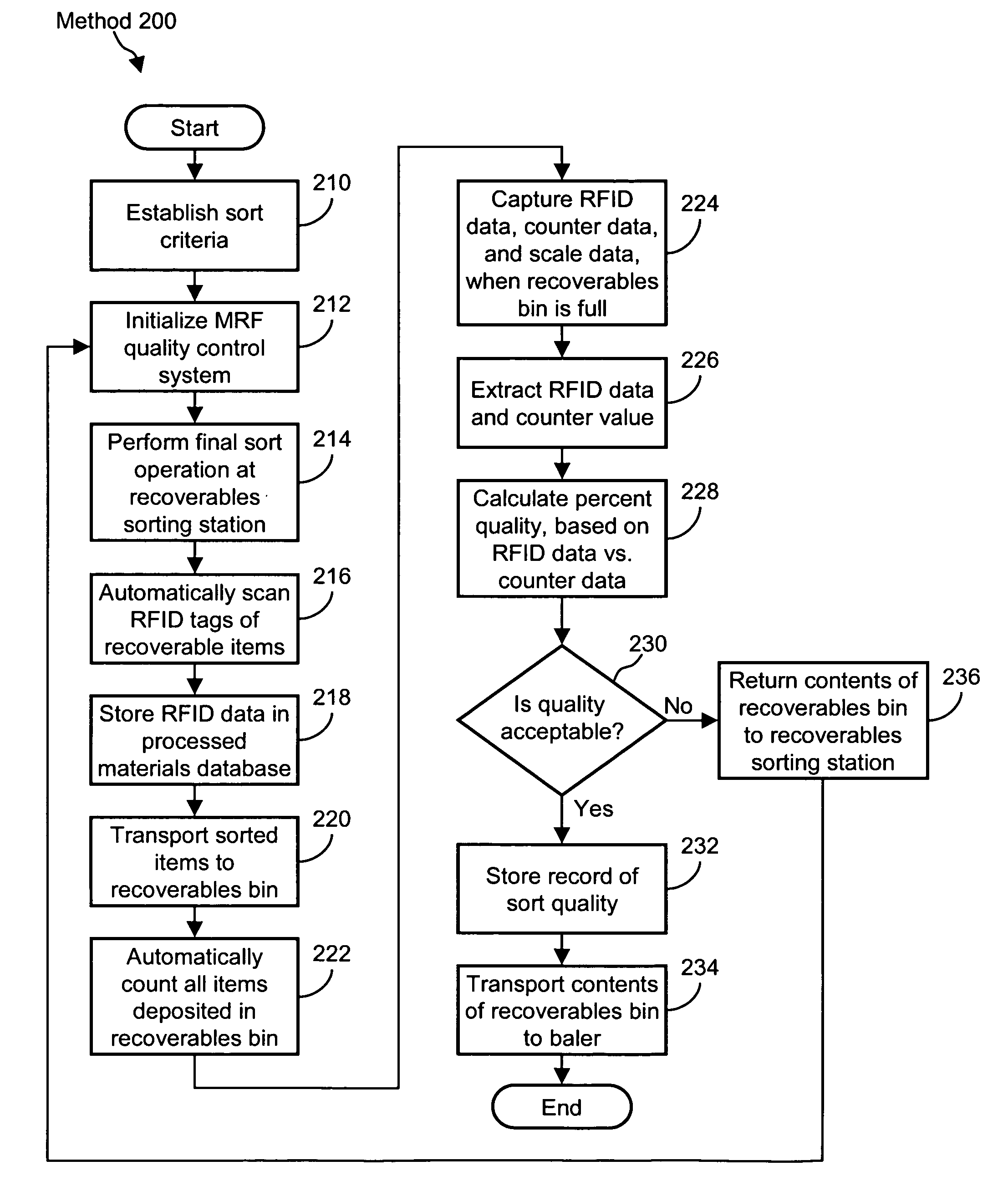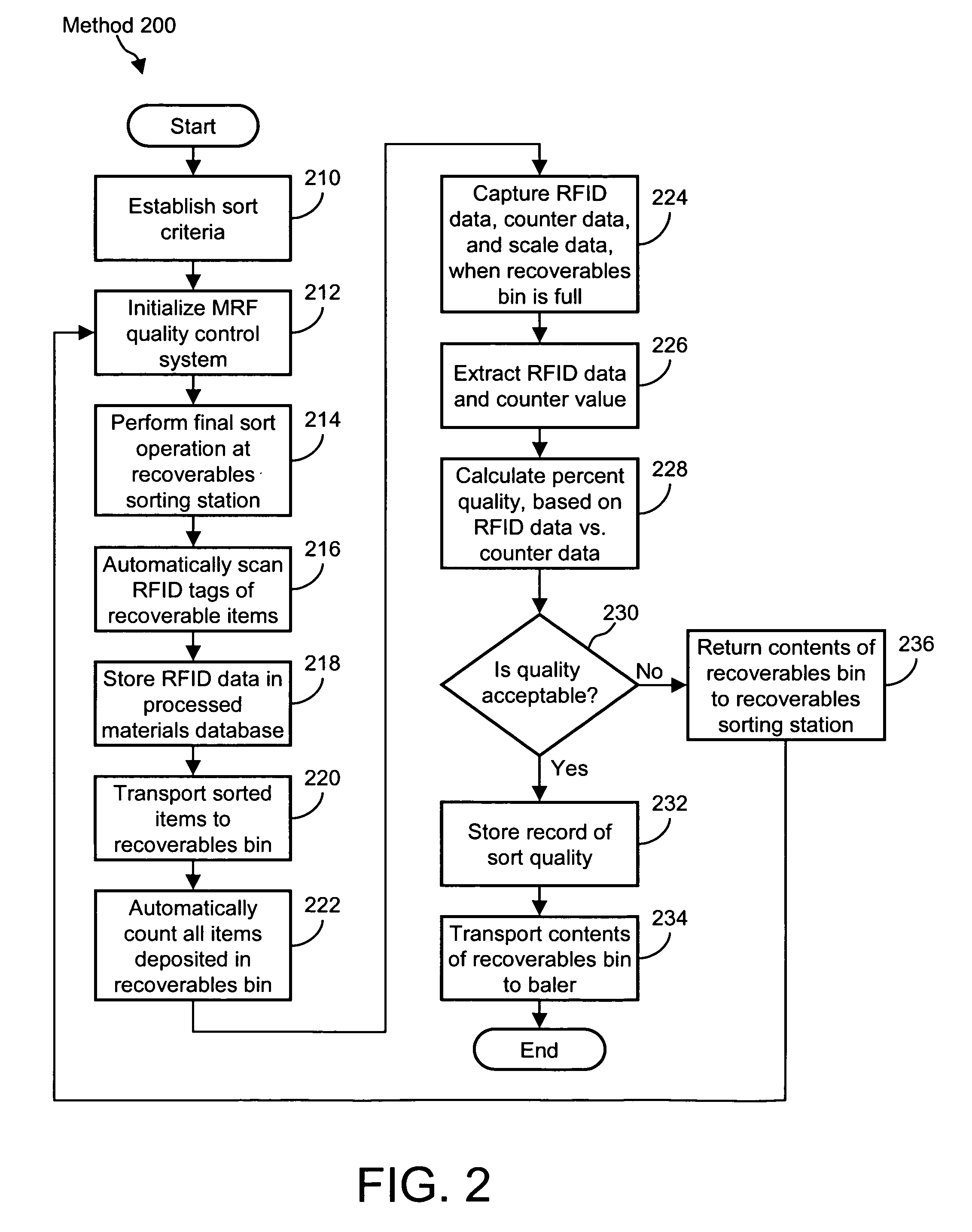Systems and methods for indicating a quality of grouped items
- Summary
- Abstract
- Description
- Claims
- Application Information
AI Technical Summary
Benefits of technology
Problems solved by technology
Method used
Image
Examples
Embodiment Construction
[0011]Systems and methods for determining a relative quantity of recyclable items with respect to a total number of items are disclosed. In one embodiment of the present invention, a computer-implemented method includes reading an identifier respectively associated with at least some of a total number of items. The computer determines a number of identifiers associated with the recyclable items. The computer also receives a total number of items, and computes the relative quantity of recyclable items by dividing the number of identifiers associated with the recyclable items by the total number of items.
[0012]In another embodiment of the present invention, a computer-implemented method for determining a relative weight of recyclable items with respect to a weight of a total number of items is disclosed. In this embodiment, the method includes reading an identifier respectively associated with at least some of the total number of items, and determining the number of items detected by ...
PUM
 Login to View More
Login to View More Abstract
Description
Claims
Application Information
 Login to View More
Login to View More - R&D
- Intellectual Property
- Life Sciences
- Materials
- Tech Scout
- Unparalleled Data Quality
- Higher Quality Content
- 60% Fewer Hallucinations
Browse by: Latest US Patents, China's latest patents, Technical Efficacy Thesaurus, Application Domain, Technology Topic, Popular Technical Reports.
© 2025 PatSnap. All rights reserved.Legal|Privacy policy|Modern Slavery Act Transparency Statement|Sitemap|About US| Contact US: help@patsnap.com



